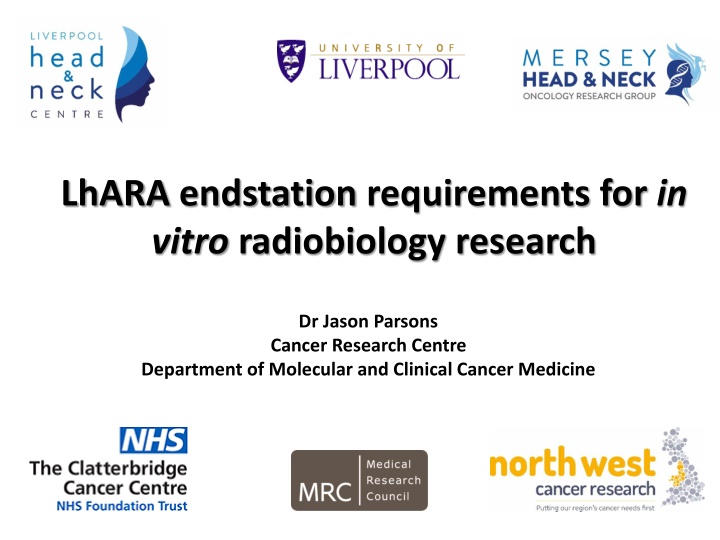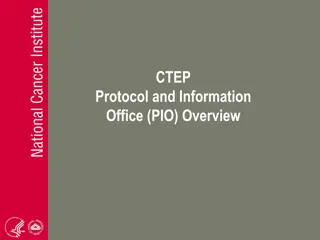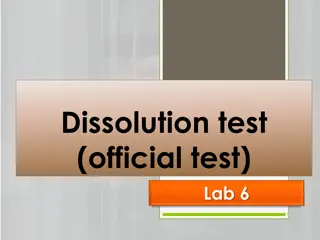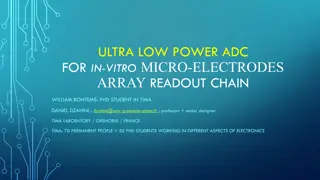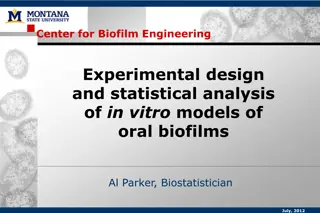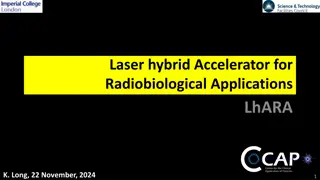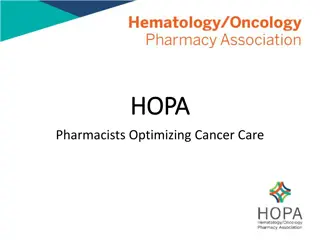Requirements for In Vitro Radiobiology Research at Cancer Research Centre
This article outlines the detailed requirements for conducting in vitro radiobiology research at the Cancer Research Centre, focusing on the work of Dr. Jason Parsons in the Department of Molecular and Clinical Cancer Medicine. It provides valuable insights and guidelines for researchers looking to study the effects of radiation on biological systems.
Download Presentation

Please find below an Image/Link to download the presentation.
The content on the website is provided AS IS for your information and personal use only. It may not be sold, licensed, or shared on other websites without obtaining consent from the author.If you encounter any issues during the download, it is possible that the publisher has removed the file from their server.
You are allowed to download the files provided on this website for personal or commercial use, subject to the condition that they are used lawfully. All files are the property of their respective owners.
The content on the website is provided AS IS for your information and personal use only. It may not be sold, licensed, or shared on other websites without obtaining consent from the author.
E N D
Presentation Transcript
LhARA endstation requirements for in vitro radiobiology research Dr Jason Parsons Cancer Research Centre Department of Molecular and Clinical Cancer Medicine
Particle beam therapy (PBT) radiobiology Tumour Bragg peak Distal fall-off Relative dose LET Particle energy Depth in tissue Vitti and Parsons (2019) Cancers Taken from Paganetti and van Luijk (2013) Sem Rad Oncol A constant relative biological effectiveness (RBE) value of 1.1 is used in clinical practice. However, there is a large uncertainty with using this approach as RBE is variable and dependent on many factors, including:- Proton energy (therefore linear energy transfer, LET) and dose. Radiosensitivity/radiobiology of the tissue. Biological end-point examined (e.g. clonogenic survival, tumour growth delay). Therefore, further research exploiting the biological impact of particles is vital for investigating RBE, and thus improving clinical use of PBT.
60 MeV Proton beam and radiobiology facilities at the Clatterbridge Cancer Centre (CCC)
Impact of PBT on cell survival and CDD 58MeV 58MeV (mod.) 11MeV 11MeV (mod.) **** 45 40 1 1 HeLa UMSCC6 CDD 35 Surviving fraction 30 Surviving fraction * % Tail DNA 25 *** 20 ** 15 10 58 MeV 11 MeV 58 MeV 11 MeV SF2, p<0.02 SF2, p<0.01 5 0.1 0.1 0 0 1 2 3 4 0 1 2 3 4 Control 0 1 2 4 Dose (Gy) Dose (Gy) 1.00 hours post-IR 1.00 DUB siRNA screen analysing changes in survival post-irradiation. 11 MeV 11 MeV Surviving fraction Surviving fraction 0.10 3 58 MeV 0.10 2 NT siRNA PARP-1 siRNA PARP/USP6_13 siRNA 0.01 USP6 NT siRNA 1 USP6_13 siRNA 0.00 0.01 0 0 2 4 6 8 0 2 4 6 8 -1.5 -0.5 0.5 1.5 2.5 3.5 Dose (Gy) -1 11 MeV Dose (Gy) Low energy (relatively high-LET) protons cause significantly reduced cell survival versus high energy (low-LET) protons. Low energy protons cause increases in CDD formation that persist for >4 h post-irradiation. -2 -3 -4 siRNA screen for deubiquitylating enzymes (DUBs) revealed that USP6 is required for survival following low energy protons. -5 Carter et al, (2018) IJROBP; Carter et al, (2019) IJROBP
Model for the recognition and repair of CDD in chromatin High-LET IR DNA damage - RNF20/40 Site-specific histone modifications MSL2 Ub USP6 Chromatin remodelling/DNA repair protein recruitment PARG PARP-1 OGG1 BRCA2 Restoration of DNA integrity Carter et al., (2018) IJROBP; Carter et al., (2019) IJROBP
Benefits of FLASH radiotherapy Using ultra-high dose rates (>100 Gy/s). The underlying mechanism(s) of the FLASH effect are unclear (oxygen depletion, role of DNA damage and repair?). Lack of radiobiology research into FLASH PBT (LET impact?) and facilities to perform this.
In vitro end-station requirements Reliable beam with accurate dosimetry (low and FLASH dose rates). Automation to allow rapid irradiation of large sample numbers. Precise irradiation relative to the Bragg peak (with increasing LET). Irradiation in different oxygen conditions (hypoxia; important for FLASH). Microscopy, particularly enabling time lapse experiments (e.g. DNA damage markers/foci). Radiobiology research facilities enabling cellular/molecular biology approaches for processing of samples in real-time (minutes-hours).
